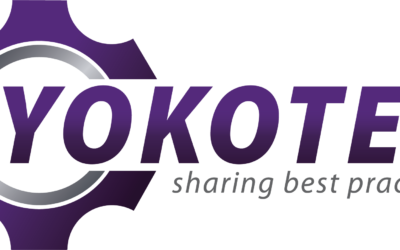Can’t cope with Demand right now! Production – Capacity – Optimisation Part II b
Production based on one-piece-flow
- In a production environment you should be aiming for a one-piece flow approach to process improvement. This will also mean eliminating all work-in-progress (WIP) to zero, where ever possible.
- If your output is based on batch production, then this may be the right way of working. However, remember to at least eliminate any WIP between processes which are above one batch size. This may be a real challenge and under the limitations of the present design of the production line or factory, this will not be possible.
- Moving from batch size to one-piece-flow requires experience and knowledge which often should be brought in from outside. It is much easier to see what can be improved in a process especially if there is a fresh pair of eyes looking at the processes.
- Reduce all WIP, this is just semi-produced parts maturing like wine while the semi-complete products wait for the next process.
- Plan the work so that production are able to produce the volumes according to a plan. This is not only a goal focused approach but also defines the cost of one unit produced assuming you have also set KPI’s for the direct costs of labour for each process, for each unit produced.
- Optimise the line-layout. There is no one rule for this. We all agree that a U shape line is the most optimum but it also depends on various other factors.
- Do you have parts and materials arriving to line just when they are required. Who delivers to line, production or internal logistics employees?.
- How flexible are your employees, I call this self-reliance. In other words how many process can each employee perform well if given the task of managing the particular process. The more flexible you are here with your work-force the more flexible you are in planning the line as well as the number of operators on the process for a given shift.
Eliminate all down-time
- Eliminate all non-planned line stops.
a. Start by doing a Pareto analysis of the main causes.
b. Follow up on the single largest cause from the Pareto chart.
c. Do this with the team by finding the facts. Root-cause analysis is based on facts. You cannot afford to have an opinion for the cause of a problem.
d. Follow-up by putting in place permanent countermeasures.
e. Standardise the process.
f. Celebrate the success in some moderate way but in a respectful way,
g. Move to the next problem on the Pareto chart. - Reduce all planned-line-stops.
a. The main ones are; employee breaks, TPM and SMED.
b. From experience, you could probably reduce 50% of the planned-down-time here and increase your production Availability time to produce goods by at least 20% per shift.
c. This would not be unusual if you approach the problem from a TPS perspective. - Do not stop using visual management techniques. Conduct Daily shop-floor meetings and focus on problems employees encounter and escalate to their leaders. Action and give visual feedback to each point raised or escalated.
Employee Engagement
The subject of navigating Employee Engagement in a company is just a little more complicated then single handed sailing from Durban in South Africa to Anchorage in Alaska. As this is probably the most important ingredient in any Lean Leadership journey, I have dedicated a separate article (not to mention hand-book) on this subject in a future post.
“For now, don’t forget to practice Go, See, Listen, Understand and appreciate your employees”.
What could we do for you !
Discuss on-line what your “current state” of business is and what you would like to change.
On-site, conduct an immediate Four Stage Operational – Impact Assessment, followed by Results Driven Delivery – Time – Optimisation implementation.
The result
Reducing delivery time or lead time or cycle time has a direct effect on your OPEX costs which in-turn has a direct effect on your EBITDA. The shorted the process times, the higher the profits.
Following articles will relate to companies that are struggling with a lack of demand.
This article has been produced with the support of the Lean Leadership Way Institute, llw-institute.com within the YOKOTEN principles of sharing best practices.
If you have found this article valuable, please let us know.
Mark Forkun



